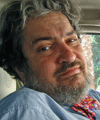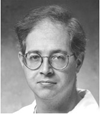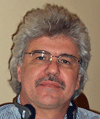Academic Anesthesiology Department--A Blueprint
Executive Summary
W. Andrew Kofke
May 26, 2011
Executive Summary
The mission of the Department of Anesthesiology is to advance the science and practice of anesthesia through the integration of medical and graduate education, patient care, and research in a single academic community.
My vision of an academic anesthesiology department encompasses development and maintenance of excellent programs in clinical care, education, and research. All subspecialties of anesthesiology are practiced with increasing involvement in external remunerative activities. Residency and medical student experience is of the highest quality, including use of simulation. The research program includes clinical and laboratory research with identified areas of excellence with external funding.
Blueprint
Clinical service will be based in multisubspecialty practice in perioperative medicine with the core competencies remaining in the OR, ICU, and pain clinic. Anesthesiologists have multiple tasks and challenges relating to operating room anesthesia. These include running an efficient preop evaluation clinic, solving manpower issues with respect to direct provider caregivers and faculty, supporting trauma services, providing anesthesia at multiple remote sites, and developing and implementing ideas for cost containment. The surgical intensive care unit should be staffed by faculty from anesthesiology and surgical services with interdisciplinary coordination at the faculty and housestaff level with a meaningful role for critical care nurse practitioners. The pain service will ensure minimal perioperative pain and provide leadership in the management of chronic pain and palliative care. An information management system should be in place to facilitate cost containment initiatives, increase efficiency of caregivers, and improve quality of care. Such a system can be helpful in documenting the excellence of clinical care provided by the institution. Decision support systems are available to manpower decision makers to enable performance of “what-if” analysis of various scenarios and application of evidence based medicine as applicable..
Research activities are multiple faceted. Research is primarily driven by clinical problems, involving the complementary expertise of basic scientists and clinicians. One important mechanism to foster and support clinically relevant research is through disease-oriented program development. Such programs, composed of clinicians from diverse specialties and basic scientists, can effectively focus their members’ varying perspectives to most expeditiously solve clinical problems. A clinical trials program is set up in the department or the institution to facilitate negotiations with industry to perform research studies. The department’s most finite and valuable resources, time and academic funds are fairly allotted through a seed grants mechanism. Department faculty can act as advisors to undergraduates and high school students wishing to gain an exposure to medical research. A bioengineering program can effectively add another dimension to the research and business efforts of the department. The traditional ways of funding research, while still useful are very elusive for clinical faculty who are subjected to increasing clinical and administrative demands. Options for funding research include grants and contracts, institutionally or insurance supported cost effectiveness research, industry-sponsored specific product evaluation, moonlighting (internal or external) to augment funds for an individual faculty for research, and increasing the revenue stream to the department through external business activities. A program in education research is based on the controlled conditions available in the simulator. New faculty start up remains a difficult problem and several options are available for a given situation.
Education activities are mostly focused on resident education with important consideration given to medical students, fellows and others. An organized didactic schedule covers material needed to become board certified. High quality residents are presently rather difficult to attract. A variety of strategies are employed to facilitate resident recruitment and retention. A residency academic track is available for residents interested in pursuing an academic career. A T32 or equivalent research education grants are available or are sought.
Outreach activities are an essential component of a department’s marketing plan. Such activities are done to maintain the excellent reputation of the department in the medical center, in the region, and nationally using described outreach tools, publications, and selective use of visiting professors. Anesthesiology faculty are encouraged to participate in outreach of other health system programs, particularly if they are members of multidisciplinary disease-oriented programs.
Business activities should be fostered to support the academic mission of the department. University affiliated business activities, as warranted by available markets, can be developed in areas relevant to faculty expertise such as monitoring, pain management, locum tenens, respiratory therapy, critical care transport,telemedicine, legal consultation, or academic peer review for publishing houses.
The full treatise can be viewed at
 Mitch Keamy is an anesthesiologist in Las Vegas Nevada
Mitch Keamy is an anesthesiologist in Las Vegas Nevada
 Andy Kofke is a Professor of Neuro-anesthesiology and Critical Care at the University of Pennslvania
Andy Kofke is a Professor of Neuro-anesthesiology and Critical Care at the University of Pennslvania
 Mike O'Connor is Professor of Anesthesiology and Critical Care at the University of Chicago
Mike O'Connor is Professor of Anesthesiology and Critical Care at the University of Chicago
 Rob Dean is a cardiac anesthesiologist in Grand Rapids Michigan, with extensive experience in O.R. administration.
Rob Dean is a cardiac anesthesiologist in Grand Rapids Michigan, with extensive experience in O.R. administration.